Wildlife Crime & Biodiversity: The Dark Side of Illicit Trade
Wildlife crime is a pressing issue that often lurks in the shadows of society, representing a significant threat to our planet's biodiversity. It encompasses a range of illegal activities, including the poaching of animals, trafficking of endangered species, and the illegal trade of plants. This dark side of illicit trade not only endangers the survival of various species but also disrupts the delicate balance of ecosystems that sustain life on Earth. The motivations behind wildlife crime are varied, ranging from economic gain to cultural practices, but the consequences are universally detrimental. As we delve deeper into this topic, we will uncover the complexities of wildlife crime and its far-reaching impacts on biodiversity, ultimately highlighting the urgent need for action.
At its core, wildlife crime refers to the illegal trade of flora and fauna, a practice that has grown alarmingly in recent years. It is not just about poaching iconic species like elephants and rhinos; it also includes the exploitation of lesser-known organisms that play crucial roles in their ecosystems. The motivations behind wildlife crime can be as diverse as the species affected. For some, it is a means of survival in impoverished communities, while for others, it is driven by greed and the lucrative profits associated with the illegal wildlife trade. Understanding these motivations is essential in addressing the issue effectively.
The impact of wildlife crime on biodiversity is profound and multifaceted. Illicit trade leads to the depletion of populations of endangered species, which in turn disrupts entire ecosystems. When a species is removed from its habitat, it creates a ripple effect that can lead to the decline of other species, altering food chains and destabilizing ecological relationships. For instance, the decline of a predator can cause an overpopulation of prey species, which may then overgraze vegetation, leading to habitat degradation. This interconnectedness highlights the fragility of our ecosystems and the urgent need to combat wildlife crime to preserve biodiversity.
Among the many species facing heightened risks due to wildlife crime, some stand out as poignant examples of the urgency of conservation efforts. Take the Sumatran tiger, for instance, whose population has dwindled to fewer than 400 individuals due to poaching and habitat loss. Similarly, the black rhino has been pushed to the brink of extinction, with its horn fetching astronomical prices on the black market. The plight of these endangered species serves as a clarion call for action, reminding us that the survival of these magnificent creatures hinges on our collective efforts to combat wildlife crime.
Examining real-world examples of poaching reveals the brutal methods employed by traffickers and the devastating consequences for target species. In Africa, poachers often use high-powered rifles and sophisticated tracking technology to hunt elephants for their ivory. In Asia, the demand for tiger bones and parts has led to organized crime syndicates operating in the shadows. These case studies illustrate not only the methods used but also the urgent need for effective intervention strategies to protect vulnerable species.
Wildlife crime is intricately linked to habitat destruction, exacerbating the decline of species. Illegal logging, mining, and land conversion for agriculture often go hand in hand with poaching activities. When habitats are destroyed, animals are forced to migrate, leading to increased human-wildlife conflict and further endangering their populations. The relationship between illegal trade and habitat loss is a vicious cycle that underscores the need for comprehensive approaches to conservation that address both issues simultaneously.
Effective laws and enforcement mechanisms are crucial in combating wildlife crime. Numerous international agreements, such as the Convention on International Trade in Endangered Species (CITES), aim to regulate and protect endangered species. However, the challenges faced by law enforcement agencies are significant. Corruption, lack of resources, and insufficient training hinder their ability to enforce these laws effectively. Strengthening legislation and enhancing enforcement capabilities are essential steps in the fight against wildlife crime.
Local communities play a vital role in wildlife conservation efforts. Engaging these communities in conservation initiatives can lead to sustainable practices that benefit both people and wildlife. Education and awareness campaigns can empower individuals to recognize the value of preserving biodiversity, turning them from potential poachers into protectors of the environment. By fostering a sense of ownership and responsibility, communities can become powerful allies in the fight against wildlife crime.
There are numerous success stories that showcase the positive impact of community involvement in conservation. For example, in Kenya, the Maasai Mara community has embraced eco-tourism, providing sustainable livelihoods while protecting their wildlife. Similarly, in Madagascar, local groups have successfully reduced illegal logging through community-led initiatives that promote sustainable land use. These examples inspire hope and demonstrate that collaborative efforts can yield significant results in combating wildlife crime.
Despite progress, various challenges continue to hinder conservation efforts. Corruption remains a significant barrier, with some officials turning a blind eye to illegal activities for personal gain. Additionally, lack of resources and insufficient public awareness perpetuate wildlife crime and threaten biodiversity. Addressing these challenges requires a multifaceted approach that includes strengthening governance, increasing funding for conservation initiatives, and raising awareness about the importance of biodiversity.
- What is wildlife crime? Wildlife crime refers to illegal activities involving the trade of animals and plants, including poaching and trafficking.
- How does wildlife crime affect biodiversity? It threatens endangered species, disrupts ecosystems, and contributes to habitat loss.
- What can communities do to combat wildlife crime? Communities can engage in conservation efforts, promote sustainable practices, and participate in education and awareness campaigns.
- What are some successful conservation initiatives? Examples include eco-tourism projects in Kenya and community-led conservation efforts in Madagascar.

Understanding Wildlife Crime
Wildlife crime is a term that encompasses a range of illegal activities involving the trade of animals and plants. This illicit trade is not just a matter of poaching or capturing animals; it includes a vast network of activities that threaten the very fabric of our ecosystems. From the elegant pangolin, whose scales are prized in traditional medicine, to the majestic elephants, hunted for their ivory, wildlife crime is a complex issue that intertwines with cultural, economic, and social factors. But what drives individuals to engage in such destructive practices?
At its core, wildlife crime can be classified into several categories, including poaching, trafficking, and illegal logging. Poaching refers to the illegal hunting of animals, often for their skins, bones, or other body parts. Trafficking, on the other hand, involves the illegal trade of these animals and their parts across borders. Illegal logging contributes to biodiversity loss as it leads to habitat destruction, which in turn affects countless species. The motivations behind these crimes are varied, ranging from economic gain to cultural beliefs. In many regions, wildlife products can fetch high prices on the black market, making them attractive to those in poverty. This creates a vicious cycle where communities are lured into illegal activities due to desperation.
The significance of wildlife crime extends beyond just the loss of individual species; it poses a serious threat to environmental conservation as a whole. When we look at the broader context, we see that wildlife crime undermines conservation efforts and disrupts the balance of ecosystems. For example, the removal of a key species can have a cascading effect on the food chain, leading to overpopulation of certain species and extinction of others. This not only affects biodiversity but also has implications for human health and livelihoods, as ecosystems provide essential services such as clean air, water, and food.
Moreover, the fight against wildlife crime is hindered by a lack of awareness and understanding among the general public. Many people are unaware of the impact their choices have on wildlife and the environment. For instance, purchasing souvenirs made from endangered species or supporting businesses that engage in illegal logging can contribute to the problem. Educating communities about the importance of biodiversity and the consequences of wildlife crime is crucial in fostering a culture of conservation.
In summary, understanding wildlife crime is essential for effective conservation strategies. It requires a holistic approach that considers the various forms of illicit trade, the motivations behind it, and the broader implications for biodiversity and ecosystems. By addressing these issues, we can begin to dismantle the networks that perpetuate wildlife crime and work towards a more sustainable future for our planet.
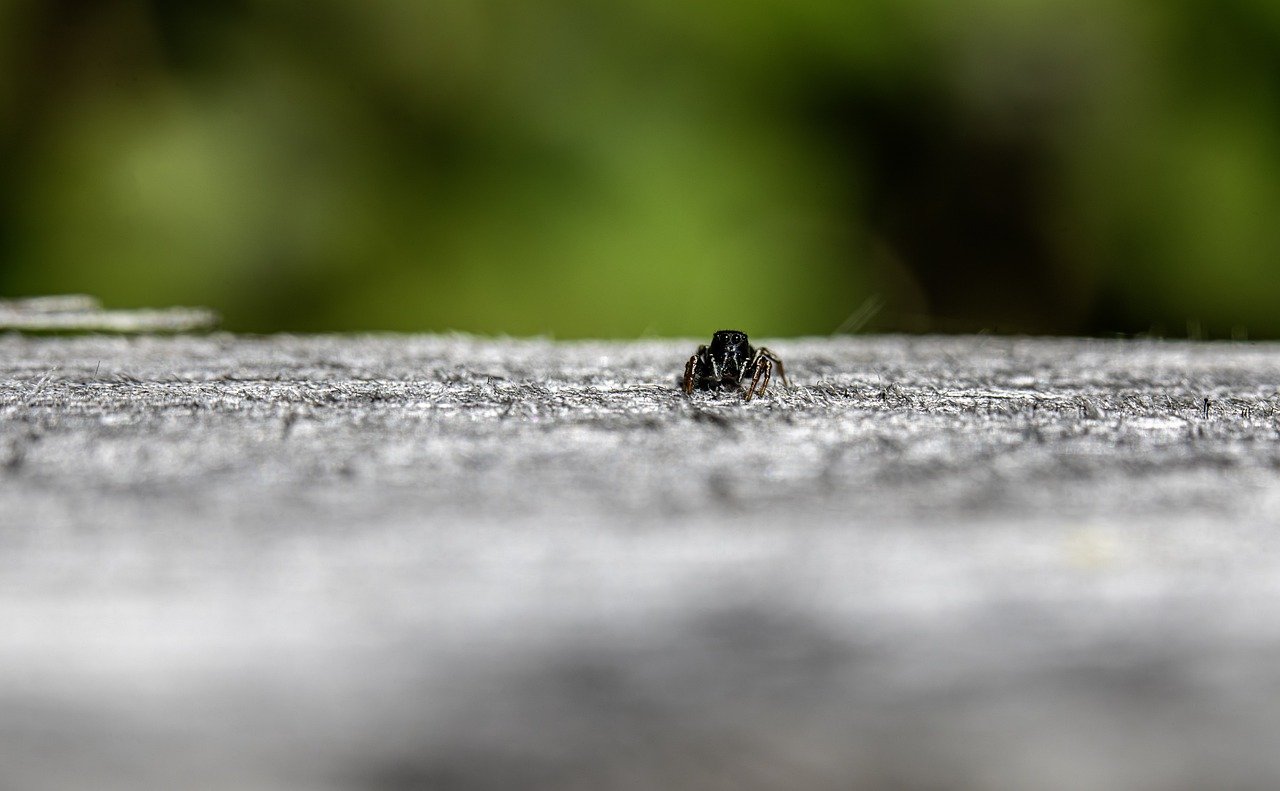
The Impact on Biodiversity
Wildlife crime is not just a heinous act against individual animals; it is a significant threat to the very fabric of our planet's biodiversity. When we think about biodiversity, we often picture vibrant ecosystems teeming with life, but this delicate balance is increasingly under siege. The illicit trade of wildlife has far-reaching consequences, impacting not only the species that are hunted or trafficked but also the ecosystems they inhabit. It's like pulling a single thread from a tapestry; the entire design begins to unravel.
One of the most alarming aspects of wildlife crime is its role in pushing numerous species toward extinction. According to the International Union for Conservation of Nature (IUCN), a staggering number of species are now classified as endangered, vulnerable, or critically endangered due to poaching and illegal trade. For instance, consider the plight of the Asian elephant, which faces threats from ivory poaching and habitat destruction. As these magnificent creatures disappear, their absence disrupts the intricate web of life that relies on them, from the plants they help pollinate to the other animals that share their habitat.
Moreover, the impact of wildlife crime extends beyond individual species, leading to significant ecosystem disruption. When a particular species is removed from its habitat, it can create a ripple effect, leading to overpopulation of certain species and the decline of others. For example, the removal of top predators can result in an explosion of herbivore populations, which in turn can decimate vegetation and alter the landscape. This phenomenon is akin to a game of Jenga; remove one block, and the entire structure may collapse.
One of the most pressing concerns is habitat loss, which is often exacerbated by illegal wildlife trade. The destruction of habitats for illegal logging, mining, or agriculture not only displaces wildlife but also diminishes the natural resources that communities depend on. For example, tropical rainforests, which are biodiversity hotspots, are being decimated for illegal timber and land conversion. As these habitats disappear, so too do the countless species that call them home, leading to a stark decline in biodiversity.
To illustrate the gravity of the situation, consider the following data:
| Species | Current Status | Threats |
|---|---|---|
| Sumatran Tiger | Critically Endangered | Poaching, habitat loss |
| Black Rhino | Critically Endangered | Poaching for horns |
| Vaquita | Critically Endangered | Bycatch in illegal fishing |
In conclusion, the impact of wildlife crime on biodiversity is both profound and alarming. It is a multifaceted issue that not only threatens individual species but also disrupts entire ecosystems, leading to a cascade of negative effects. As stewards of the Earth, we must recognize that every action counts. Protecting biodiversity is not just about saving the animals; it’s about preserving the intricate connections that sustain life on our planet.
- What is wildlife crime? Wildlife crime refers to illegal activities involving the trade of animals and plants, including poaching and trafficking.
- How does wildlife crime affect biodiversity? It leads to the decline of species populations, disrupts ecosystems, and contributes to habitat destruction.
- What can be done to combat wildlife crime? Strengthening legislation, increasing awareness, and promoting community involvement are crucial steps in addressing this issue.
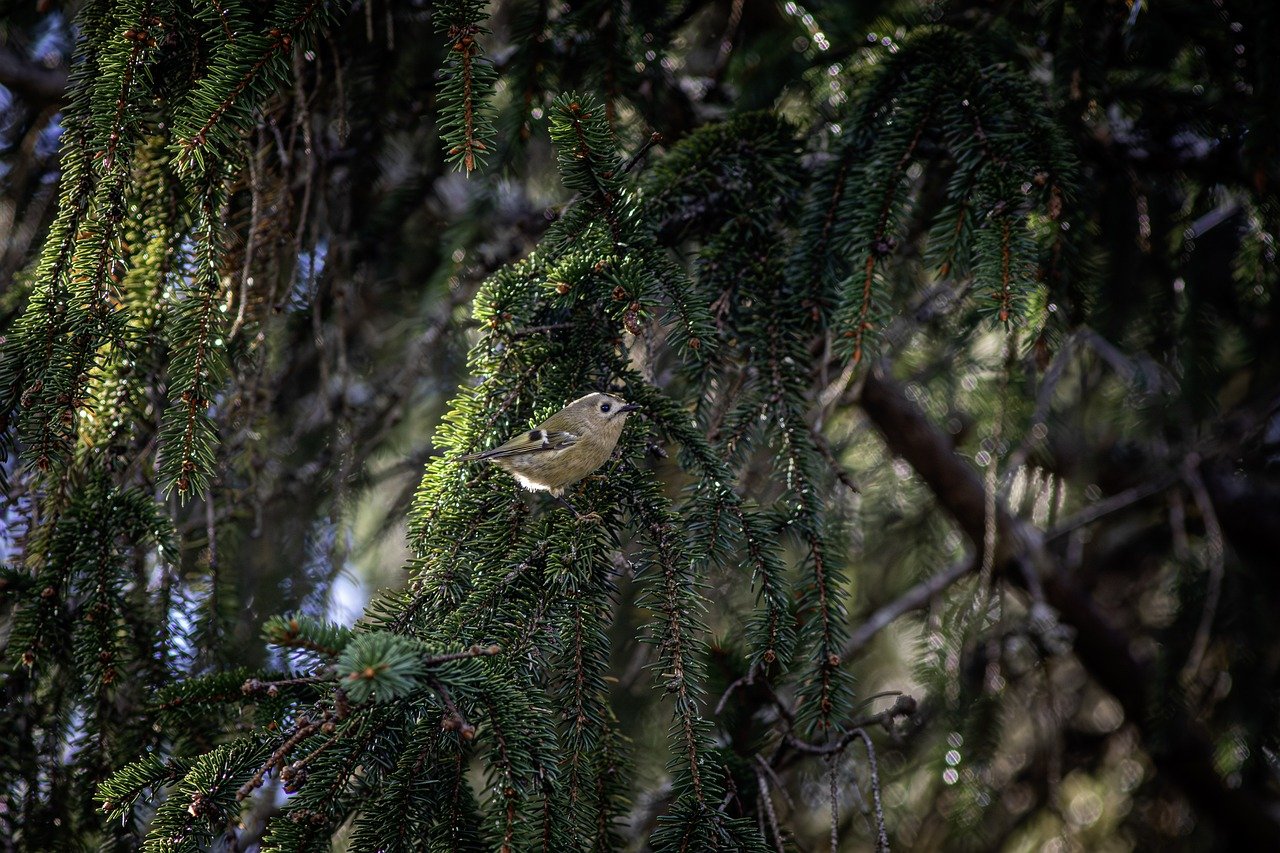
Endangered Species at Risk
When we think about endangered species, our minds often drift to majestic animals like the tiger or the elephant. However, the reality is that countless species are teetering on the brink of extinction, primarily due to the nefarious activities of wildlife crime. This illicit trade doesn't just threaten the survival of individual animals; it poses a serious risk to entire ecosystems. For instance, the illegal poaching of the rhino for its horn has led to a staggering decline in its population, with some species facing the very real possibility of disappearing forever.
One of the most alarming aspects of wildlife crime is its impact on biodiversity. When a species is removed from its habitat, the repercussions can be felt throughout the ecosystem. Take the case of the African elephant. As they are poached for their ivory, the loss of these giants disrupts the delicate balance of their environment. Elephants are known as "ecosystem engineers" because they create and maintain habitats for other species. Their decline can lead to overgrowth of vegetation, which in turn affects countless other animals that rely on a balanced ecosystem to thrive.
In addition to the well-known species, many lesser-known animals are also facing extinction due to wildlife crime. For example, the Sumatran orangutan is critically endangered, not just because of poaching but also due to habitat destruction driven by illegal logging and palm oil plantations. This multifaceted threat means that conservation efforts must be equally comprehensive, addressing both direct poaching and the broader environmental issues at play.
To illustrate the severity of the situation, consider the following table that highlights some of the most critically endangered species and the primary threats they face:
| Species | Population Estimate | Main Threats |
|---|---|---|
| Sumatran Orangutan | Approx. 14,000 | Habitat loss, poaching |
| Javan Rhino | Approx. 80 | Poaching, habitat loss |
| Vaquita | Approx. 30 | Bycatch, illegal fishing |
| Amur Leopard | Approx. 100 | Poaching, habitat loss |
These figures tell a harrowing story of loss and urgency. The plight of these species serves as a clarion call for global action. We must ask ourselves: what can we do to help? The answer lies in raising awareness, supporting conservation initiatives, and advocating for stricter laws against wildlife crime. Every individual has a role to play in ensuring that these magnificent creatures do not vanish from our planet.
Moreover, it’s crucial to understand that the fight against wildlife crime is not just about saving animals; it’s about preserving the intricate web of life that sustains us all. By protecting endangered species, we are also safeguarding our own future and the health of our planet. So, let’s unite in this cause, because every effort counts, and together we can make a difference.
- What is wildlife crime? Wildlife crime refers to illegal activities involving the trade of animals and plants, often driven by demand for exotic pets, traditional medicine, and luxury goods.
- How does wildlife crime affect biodiversity? Wildlife crime leads to the depletion of endangered species, disrupts ecosystems, and contributes to habitat loss, ultimately threatening the delicate balance of nature.
- What can individuals do to help combat wildlife crime? Individuals can raise awareness, support conservation organizations, and advocate for stronger laws and enforcement against wildlife trafficking.
- Are there successful conservation initiatives? Yes, many communities around the world have successfully reduced wildlife crime through education, sustainable practices, and collaboration with law enforcement.
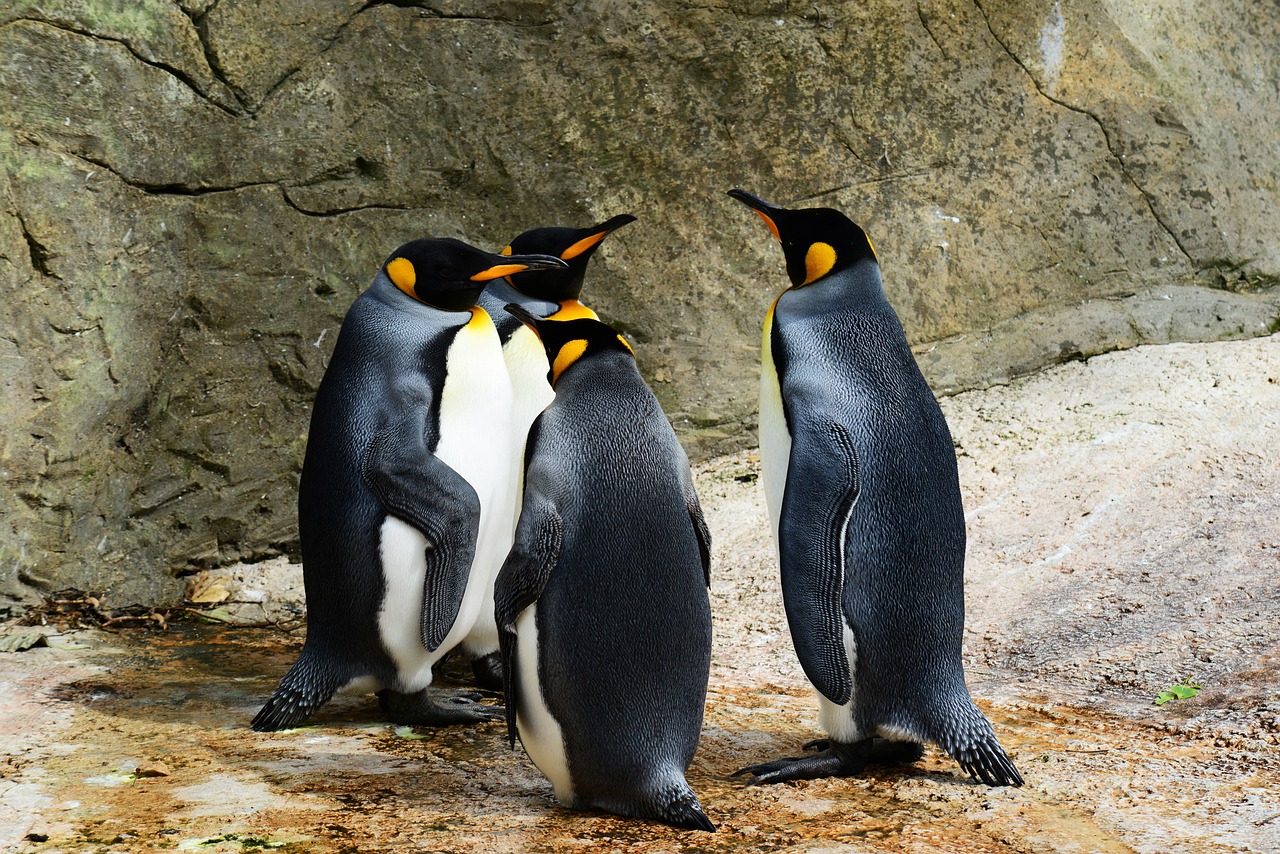
Case Studies of Poaching
Poaching is not just a crime; it's a devastating act that erodes the very fabric of our ecosystems. To truly understand the gravity of wildlife crime, we must delve into specific case studies that illuminate the methods used by traffickers and the dire consequences for endangered species. One such case is the poaching of the African elephant, which has seen its population plummet due to illegal ivory trade. In regions like Tanzania, poachers employ sophisticated techniques, including the use of firearms and even drones, to track and kill these majestic creatures. The ivory is then smuggled across borders, often ending up in markets in Asia, where it fetches exorbitant prices. This not only threatens the survival of elephants but also destabilizes the entire ecosystem they inhabit.
Another poignant example is the plight of the rhino. In South Africa, rhinos are targeted for their horns, which are falsely believed to possess medicinal properties. The demand from countries like Vietnam has led to a surge in poaching activities. In 2017 alone, over 1,000 rhinos were killed in South Africa, a staggering statistic that highlights the urgency of the situation. Conservationists are now racing against time, employing anti-poaching units that use advanced technology such as GPS tracking and thermal imaging to protect these animals. However, the challenge remains immense as poachers are often well-funded and organized.
Moreover, the tiger population has also been severely impacted by poaching. Tigers are hunted not only for their pelts but also for their bones, which are used in traditional medicine. In countries like India, where tiger reserves are established, poachers have infiltrated these protected areas, exploiting weaknesses in security. A recent case in Madhya Pradesh revealed that poachers had killed several tigers, leading to an outcry from wildlife activists and the government. The loss of tigers has a cascading effect on the ecosystem, as they play a crucial role as apex predators, maintaining the balance of species within their habitat.
These case studies underscore a troubling trend: poaching is often driven by a complex web of demand, desperation, and a lack of enforcement. The methods used by traffickers are becoming increasingly sophisticated, making it imperative for conservationists and law enforcement to adapt and innovate. As we reflect on these real-world examples, it's clear that the fight against wildlife crime is not merely about protecting individual species; it's about preserving the biodiversity that sustains our planet. The urgency of effective intervention strategies cannot be overstated, as the clock ticks down on countless species teetering on the brink of extinction.
To further illustrate the impact of poaching, the table below summarizes key statistics related to poaching incidents and their effects on specific endangered species:
| Species | Estimated Population | Annual Poaching Incidents | Conservation Status |
|---|---|---|---|
| African Elephant | 415,000 | 20,000 | Vulnerable |
| White Rhino | 18,000 | 1,000 | Near Threatened |
| Bengal Tiger | 2,500 | 100 | Endangered |
These statistics reveal not just numbers but the urgent need for action. Each poached animal represents a loss not just of biodiversity but of cultural heritage and ecological balance. As we continue to examine the harsh realities of wildlife crime, we must also look toward solutions that involve community engagement, stricter legislation, and international cooperation to combat this global crisis.
- What is wildlife crime? Wildlife crime refers to illegal activities involving the trade of animals and plants, including poaching and trafficking.
- Why is poaching a problem? Poaching threatens biodiversity by depleting populations of endangered species and disrupting ecosystems.
- How can communities help in conservation efforts? Local communities can engage in conservation through education, sustainable practices, and collaboration with conservation organizations.
- What are some effective strategies to combat wildlife crime? Effective strategies include strengthening legislation, enhancing law enforcement, and raising public awareness about the importance of biodiversity.

Habitat Destruction
Habitat destruction is one of the most insidious consequences of wildlife crime, and it’s a problem that often flies under the radar. When we think about illegal poaching or trafficking, we tend to focus on the animals themselves—the majestic elephants, the elusive tigers, or the colorful parrots that are being hunted for their ivory, fur, or feathers. However, what we often forget is that the very ecosystems these animals inhabit are also being obliterated in the process. Imagine a vibrant forest teeming with life, suddenly reduced to a barren wasteland. This is the grim reality many species face today.
Illicit trade doesn’t just involve the direct removal of animals from their habitats; it also leads to the destruction of the environments that support them. For instance, illegal logging for timber or to clear land for agriculture often goes hand-in-hand with wildlife trafficking. As trees fall, the intricate web of life that depends on that forest begins to unravel. Animals lose their homes, food sources dwindle, and the delicate balance of the ecosystem is thrown into chaos. It’s like pulling a thread from a tapestry—once one thread is gone, the entire piece begins to fall apart.
Moreover, habitat destruction has a cascading effect on biodiversity. When one species disappears, it can have a ripple effect on others. For instance, if a predator like a tiger is poached, the population of herbivores it preys upon may explode. This can lead to overgrazing, which in turn can destroy the vegetation, affecting even more species that rely on that habitat. The loss of biodiversity is not just a tragedy for the species involved; it can also disrupt ecosystem services that humans rely on, such as clean air, water, and fertile soil.
To illustrate the severity of habitat destruction caused by wildlife crime, consider the following statistics:
| Type of Habitat | Estimated Area Lost (in million hectares) | Impact on Biodiversity |
|---|---|---|
| Forests | 13 million | Loss of countless species, increased carbon emissions |
| Wetlands | 3 million | Disruption of aquatic ecosystems, loss of migratory bird habitats |
| Grasslands | 7 million | Decline of large herbivores, increased soil erosion |
In conclusion, habitat destruction fueled by wildlife crime is a multifaceted issue that requires immediate attention. The urgency of reversing this trend cannot be overstated. By addressing the root causes of habitat destruction and implementing effective conservation strategies, we can help ensure that both wildlife and their habitats are preserved for future generations. It’s a daunting task, but with collective effort and awareness, we can begin to turn the tide.
- What is wildlife crime? Wildlife crime refers to illegal activities involving the trade of animals and plants, often leading to severe consequences for biodiversity.
- How does habitat destruction affect biodiversity? Habitat destruction leads to the loss of species and disrupts ecosystems, which can have cascading effects on the environment.
- What can be done to combat wildlife crime? Strengthening legislation, enhancing community involvement, and increasing public awareness are crucial steps in combating wildlife crime.

Legislation and Enforcement
To effectively combat wildlife crime, robust legislation and stringent enforcement mechanisms are essential. Various countries and international bodies have established laws aimed at protecting endangered species and their habitats. However, the implementation of these laws often faces significant challenges. For instance, many nations struggle with inadequate resources, which hampers their ability to monitor and enforce wildlife protection regulations. This results in a paradoxical situation where the laws exist, but the enforcement is weak, allowing wildlife crime to flourish.
International agreements like the Convention on International Trade in Endangered Species of Wild Fauna and Flora (CITES) play a crucial role in regulating the trade of endangered species. CITES aims to ensure that international trade does not threaten the survival of wildlife. Yet, despite its importance, the effectiveness of CITES is often undermined by loopholes and the lack of cooperation among member countries. In many cases, traffickers exploit these gaps, leading to rampant illegal trade.
Moreover, the penalties for wildlife crime vary significantly across different jurisdictions. In some regions, the fines are minimal, making it more profitable for criminals to engage in illegal activities than to abide by the law. Consequently, there is an urgent need for harmonization of laws and penalties at both national and international levels. For example, a recent analysis revealed that countries with stricter penalties for wildlife trafficking saw a notable decrease in poaching incidents. This highlights the importance of not just having laws in place but also ensuring they are effective and enforced.
To tackle these challenges, many governments are now collaborating with non-governmental organizations (NGOs) and local communities to enhance enforcement efforts. This collaboration is vital as it brings together various stakeholders who can contribute unique insights and resources to the fight against wildlife crime. Training local law enforcement officials on the intricacies of wildlife laws and the importance of biodiversity can lead to more effective policing of wildlife crimes.
Furthermore, technology is increasingly playing a role in wildlife protection. Innovative solutions such as drones, satellite imagery, and wildlife tracking devices are being employed to monitor endangered species and their habitats. These technologies not only aid in surveillance but also help in gathering data that can inform conservation strategies. For instance, real-time data on poaching activities can enable rapid responses to threats, potentially saving countless lives.
In summary, while legislation and enforcement are critical components in the fight against wildlife crime, they must be supported by adequate resources, international cooperation, and the involvement of local communities. Only through a comprehensive approach that addresses the root causes of wildlife crime can we hope to protect our planet's invaluable biodiversity.
- What is wildlife crime? Wildlife crime refers to illegal activities involving the trade of animals and plants, including poaching and trafficking.
- How does wildlife crime impact biodiversity? Wildlife crime depletes populations of endangered species, disrupts ecosystems, and contributes to habitat loss.
- What laws exist to combat wildlife crime? There are various national and international laws, including CITES, aimed at regulating the trade of endangered species.
- How can technology help in combating wildlife crime? Technology such as drones and tracking devices can monitor wildlife and detect illegal activities in real-time.
- What role do local communities play in wildlife conservation? Local communities can engage in conservation efforts and sustainable practices, which help reduce wildlife crime.
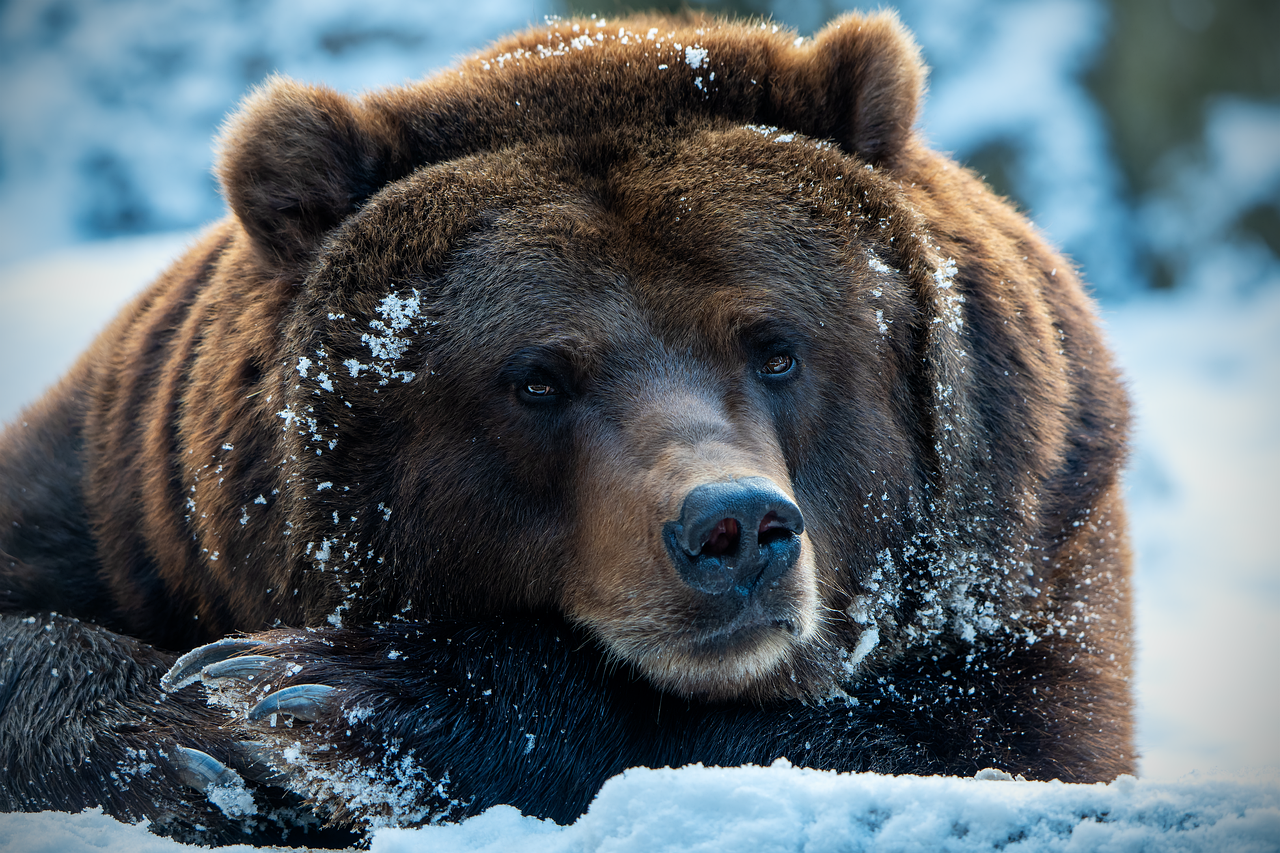
Community Involvement in Conservation
When it comes to wildlife conservation, the saying "it takes a village" couldn't be more accurate. Local communities are often the frontline defenders of biodiversity, and their involvement is crucial for the success of conservation efforts. Why? Because these communities are the ones who live in close proximity to wildlife and their habitats. They understand the delicate balance of their ecosystems and are often the first to notice changes or threats. By actively engaging local populations, conservationists can harness their knowledge, passion, and resources to combat wildlife crime more effectively.
One of the most significant benefits of community involvement is the promotion of sustainable practices. When communities are educated about the importance of biodiversity and the consequences of wildlife crime, they are more likely to adopt practices that benefit both their livelihoods and the environment. For instance, sustainable tourism initiatives can provide economic incentives for local people to protect wildlife rather than exploit it. Imagine a scenario where a community decides to preserve a forest because it attracts tourists who are willing to pay for guided tours, rather than allowing it to be cut down for timber. This not only protects the habitat but also creates jobs and boosts the local economy.
Moreover, community engagement fosters a sense of ownership and responsibility towards local wildlife. When people feel a personal connection to their environment, they are more inclined to protect it. For example, community-led patrols have been successful in many regions, where locals take on the role of guardians for their natural heritage. They monitor wildlife populations, report illegal activities, and educate others about the importance of conservation. This grassroots approach often proves to be more effective than external interventions, as locals are more familiar with their surroundings and can respond quickly to threats.
However, it’s essential to recognize that community involvement is not without its challenges. Many communities may lack the resources or training needed to effectively engage in conservation efforts. This is where partnerships with NGOs and government bodies become vital. By providing training, funding, and resources, these organizations can empower local communities to take action. For instance, workshops on sustainable farming techniques can help reduce pressure on wildlife habitats while improving food security for local families.
To better illustrate the impact of community involvement, let’s take a look at a few successful initiatives:
| Initiative | Location | Outcome |
|---|---|---|
| Community Wildlife Conservancies | Kenya | Increased wildlife populations and improved local livelihoods through eco-tourism. |
| Forest Guardians Program | Brazil | Reduced deforestation rates and enhanced biodiversity through local stewardship. |
| Marine Protected Areas | Philippines | Restored fish populations and improved community fisheries management. |
These examples highlight the transformative power of community involvement in conservation. By working together, communities can develop innovative solutions to protect their natural resources while also improving their quality of life. The synergy created through collaboration can lead to a more sustainable future for both wildlife and local populations.
In conclusion, engaging local communities in conservation efforts is not just beneficial; it is essential. By fostering a sense of ownership, providing education and resources, and promoting sustainable practices, we can create a powerful alliance in the fight against wildlife crime. So, the next time you hear about a conservation initiative, consider the role that local communities play in making it a success. After all, they are the heart and soul of conservation, and their involvement is key to ensuring a thriving planet for generations to come.
- Why is community involvement important in wildlife conservation?
Community involvement is crucial because local people have firsthand knowledge of their environment and can effectively monitor and protect wildlife. Their engagement fosters a sense of responsibility and ownership, leading to more sustainable practices. - How can communities be empowered to participate in conservation?
Communities can be empowered through education, training, and resources provided by NGOs and government bodies. This can include workshops on sustainable practices, funding for conservation projects, and support for community-led initiatives. - What are some successful examples of community-led conservation?
Examples include community wildlife conservancies in Kenya, forest guardians programs in Brazil, and marine protected areas in the Philippines, all of which have demonstrated positive outcomes for both wildlife and local communities.
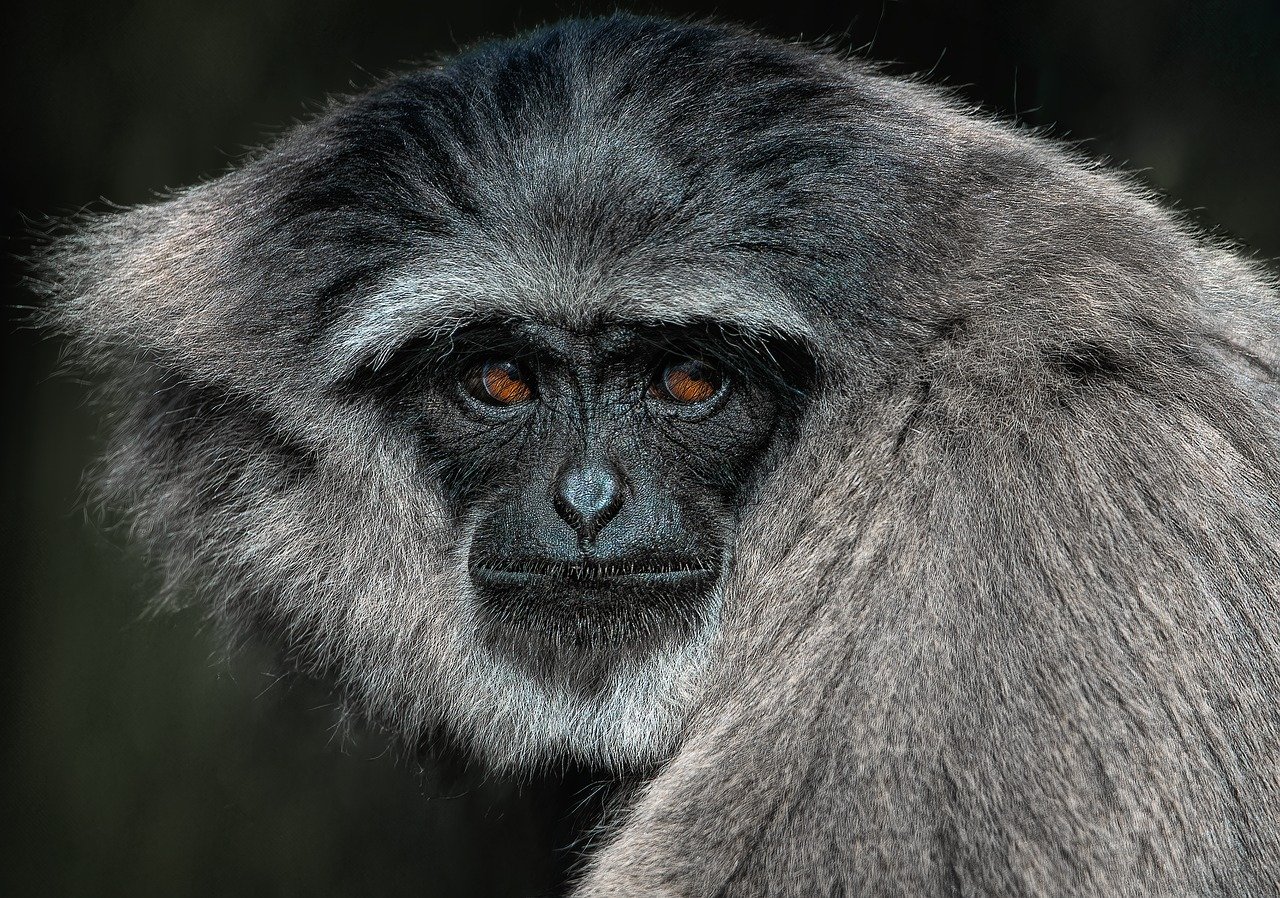
Success Stories
In the fight against wildlife crime, there are indeed glimmers of hope that shine through the darkness. Across the globe, communities have banded together, demonstrating that collective action can lead to remarkable success in conservation efforts. One of the most inspiring examples comes from the African nation of Kenya, where local communities have taken a stand against poaching through innovative approaches that not only protect wildlife but also benefit their livelihoods.
In Kenya, the Maasai Mara Wildlife Conservancies have shown how community-led initiatives can yield positive results. By establishing conservancies where local people manage the land and wildlife, they have created a sustainable model that encourages conservation rather than exploitation. These conservancies provide jobs, promote eco-tourism, and generate income for the community. In fact, a recent report highlighted that communities involved in wildlife tourism saw their revenues increase by over 30%, illustrating that protecting wildlife can be economically beneficial.
Another remarkable success story comes from India, where the Project Tiger initiative has made significant strides in protecting the Bengal tiger population. Launched in 1973, this project has not only increased awareness but also involved local communities in conservation efforts. By providing education and resources, communities have become active participants in safeguarding their natural heritage. The results are impressive: the tiger population has grown from about 1,800 in the early 1970s to over 2,500 today, thanks to rigorous anti-poaching measures and habitat preservation strategies.
Furthermore, in South America, the Amazon rainforest has seen communities rise against illegal logging and wildlife trafficking. Organizations like Amazon Watch work closely with indigenous tribes to empower them with the tools and knowledge needed to protect their land. These communities have successfully lobbied for legal protections and have implemented their own monitoring systems to combat illegal activities. As a result, areas that were once heavily exploited are now thriving, showcasing the resilience of both the land and its people.
These success stories are not just isolated incidents; they serve as powerful reminders that when communities are engaged, educated, and empowered, the tide can turn against wildlife crime. The key takeaway here is that conservation is not solely the responsibility of governments or large organizations; it is a shared duty that requires the involvement of local populations. By fostering a sense of ownership and responsibility towards wildlife, we can create a future where both humans and animals coexist harmoniously.
As we celebrate these triumphs, it’s essential to recognize that challenges remain. However, the stories of these communities illuminate a path forward. They remind us that change is possible, and with continued support and collaboration, we can build on these successes to combat wildlife crime more effectively.
- What is wildlife crime? Wildlife crime refers to the illegal trade of animals and plants, including poaching, trafficking, and habitat destruction.
- How does wildlife crime affect biodiversity? It leads to the depletion of endangered species, disrupts ecosystems, and contributes to habitat loss.
- What can communities do to combat wildlife crime? Communities can engage in conservation efforts by participating in eco-tourism, educating themselves and others, and advocating for legal protections.
- Are there successful examples of wildlife conservation? Yes, initiatives in Kenya, India, and South America have shown that community involvement can lead to significant positive outcomes in wildlife protection.
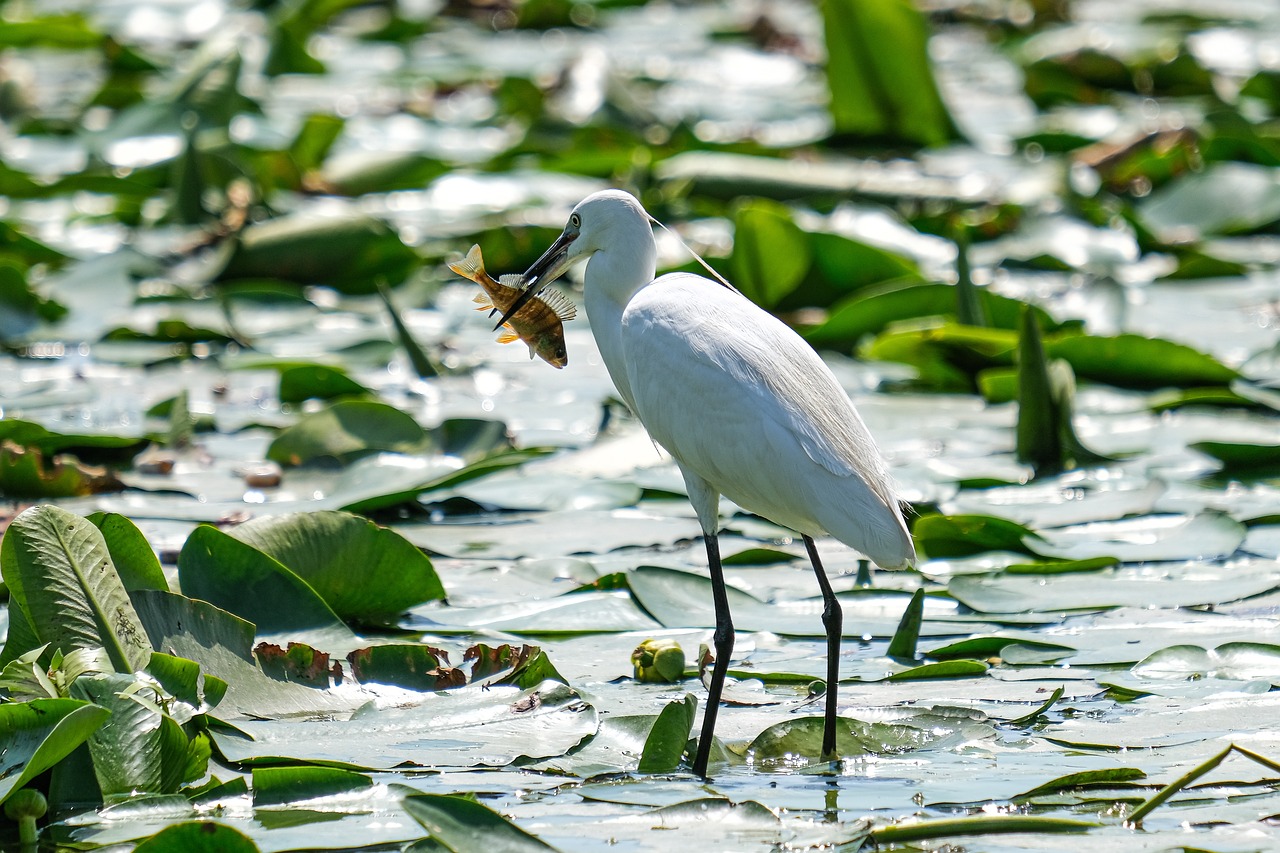
Challenges and Barriers
Despite the remarkable efforts being made to combat wildlife crime and protect biodiversity, numerous continue to hinder progress. One of the most significant obstacles is corruption. In many regions, law enforcement officials may turn a blind eye to illegal activities due to bribery or personal gain, making it exceedingly difficult to enforce existing laws. This corruption often creates a vicious cycle where wildlife traffickers feel emboldened to operate with impunity, knowing that the risk of being caught is minimal.
Another critical barrier is the lack of resources. Many countries, especially those with rich biodiversity, struggle with inadequate funding and personnel dedicated to wildlife protection. Without the necessary tools, training, and technology, it becomes nearly impossible for conservationists and law enforcement agencies to effectively monitor and protect vulnerable species. Imagine trying to catch a thief in a dark alley without a flashlight; that’s the reality faced by many wildlife protectors.
Furthermore, there is often insufficient public awareness regarding the severity of wildlife crime and its impact on biodiversity. Many people remain unaware of how their purchasing decisions can contribute to the problem. For instance, buying products made from endangered species or supporting businesses that engage in illegal wildlife trade can inadvertently fuel the crisis. Educating the public is crucial, as knowledge can empower consumers to make more sustainable choices.
Additionally, the complexity of international laws surrounding wildlife trade poses another challenge. Different countries have varying regulations, making it difficult to enforce consistent standards globally. For example, while some nations may have strict laws against the trade of certain species, others may not recognize those laws, leading to loopholes that traffickers exploit. This inconsistency can be likened to trying to play a game with different sets of rules—everyone ends up confused, and the game is unfair.
Lastly, the impact of climate change cannot be overlooked. As habitats change and ecosystems are disrupted, wildlife species become increasingly vulnerable. The stress of adapting to rapidly changing environments can exacerbate existing threats from poaching and trafficking. This interconnectedness highlights the urgent need for a holistic approach to conservation that addresses not just wildlife crime, but also the broader environmental challenges we face.
In summary, while there have been strides made in combating wildlife crime, the road ahead is fraught with challenges. Addressing corruption, increasing resources, raising public awareness, navigating complex laws, and mitigating climate change are all essential steps that need to be taken to protect our planet's rich biodiversity.
- What is wildlife crime? Wildlife crime refers to illegal activities involving the trade of animals and plants, including poaching and trafficking.
- How does wildlife crime impact biodiversity? It threatens biodiversity by depleting populations of endangered species, disrupting ecosystems, and leading to habitat loss.
- What can communities do to combat wildlife crime? Local communities can engage in conservation efforts, raise awareness, and promote sustainable practices that benefit both people and wildlife.
- What role does legislation play in wildlife conservation? Effective laws and enforcement mechanisms are crucial to combat wildlife crime and protect endangered species.
Frequently Asked Questions
- What is wildlife crime?
Wildlife crime refers to illegal activities involving the trade of animals and plants. This includes poaching, trafficking of endangered species, and illegal logging, all of which pose significant threats to biodiversity and ecosystems.
- How does wildlife crime impact biodiversity?
Wildlife crime severely threatens biodiversity by depleting populations of endangered species. It disrupts ecosystems, leads to habitat loss, and contributes to the extinction of various species worldwide, making it a pressing environmental issue.
- Which species are most affected by wildlife crime?
Many species, such as elephants, rhinos, and tigers, face heightened risks due to poaching and trafficking. These animals are often targeted for their ivory, horns, and skins, which are highly valued on the black market.
- What are some examples of poaching?
Real-world examples of poaching include the illegal hunting of elephants for their tusks and the trapping of tigers for their pelts. These activities not only threaten the targeted species but also disrupt the balance of their ecosystems.
- How does wildlife crime lead to habitat destruction?
Wildlife crime often results in habitat destruction, as illegal logging and land clearing for poaching can devastate natural environments. This loss further exacerbates the decline of species, highlighting the interconnectedness of these issues.
- What laws exist to combat wildlife crime?
There are various laws and international agreements aimed at combating wildlife crime, such as the Convention on International Trade in Endangered Species (CITES). However, enforcement can be challenging due to corruption and limited resources.
- How can local communities help in conservation efforts?
Local communities play a crucial role in wildlife conservation by engaging in sustainable practices and raising awareness. Education and community involvement can significantly reduce wildlife crime and promote biodiversity protection.
- What are some success stories in combating wildlife crime?
Success stories include communities that have effectively reduced wildlife crime through collaboration with conservation organizations. These initiatives often focus on sustainable alternatives to poaching, showcasing the power of collective action.
- What challenges do conservation efforts face?
Conservation efforts face numerous challenges, including corruption, lack of resources, and insufficient public awareness. These barriers continue to fuel wildlife crime and threaten global biodiversity, making ongoing efforts essential.



















